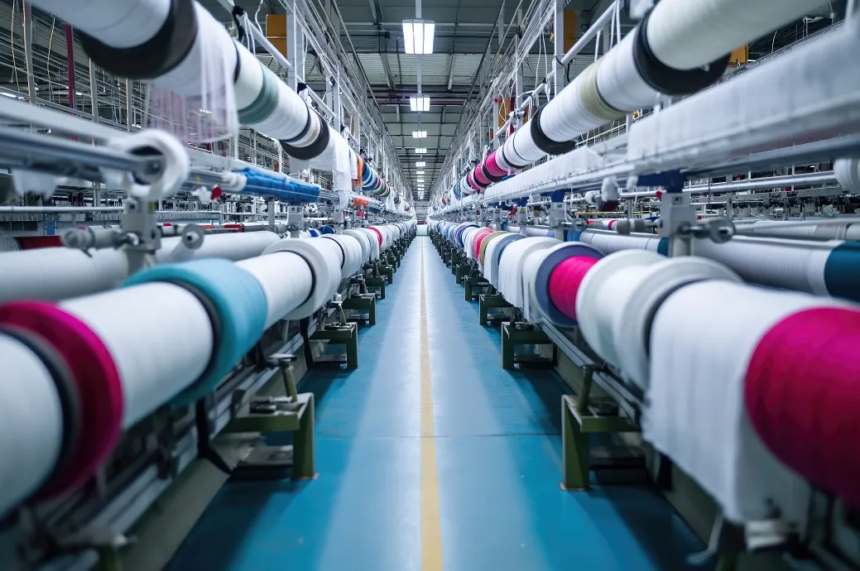The Rise of Sustainable Textile Technologies
The textile industry is one of the most resource-intensive sectors responsible for significant environmental degradation. However, with the rise of sustainable textile technologies, the industry is undergoing a green revolution. These technologies prioritize using renewable resources, reduce chemical usage, and lower carbon footprints.
Many fashion designers now incorporate eco-fabrics into their collections, prioritizing sustainability and environmental consciousness in their creations. Sustainable textile technologies encompass various processes and materials that aim to minimize the adverse environmental impacts of clothing production. This movement is driven by the urgent need to address climate change and the growing consumer demand for environmentally friendly products. As a result, the global textile market is evolving, with eco-friendly practices becoming more mainstream.
Innovative approaches such as waterless dyeing techniques and biodegradable fibers are at the forefront of this transformation. Companies are investing in closed-loop systems that recycle waste into new products, significantly reducing landfill contributions. Additionally, advancements in organic cotton farming and natural dyes are reducing the reliance on harmful pesticides and synthetic chemicals. Brands also embrace transparency, offering detailed insights into their supply chains to assure consumers of their commitment to sustainability. As these practices gain momentum, they set new industry standards and encourage widespread adoption of green technologies in textile manufacturing.
Innovative Materials Leading the Eco-Friendly Charge
Organic Cotton
Organic cotton is a prime example of sustainable fabric. It promotes soil health and biodiversity since it is grown without the use of artificial fertilizers or pesticides. It is more environmentally friendly than normal cotton because it consumes a lot less water. The reduced chemical use ensures that the surrounding environment and farmers’ health are preserved.
Recycled Polyester
Recycled polyester is another material that is making waves in the textile world. This fabric, made from post-consumer plastic waste like PET bottles, helps reduce landfill waste and conserve natural resources. It also requires less energy than virgin polyester, resulting in a lower carbon footprint. Recycled polyester offers the same durability and performance as its conventional counterpart, making it a practical and sustainable alternative.
Mushroom Leather
Mushroom leather, or mycelium leather, is an innovative material derived from mushrooms’ root structures. This biodegradable fabric is a sustainable alternative to animal leather, requiring fewer resources and producing less waste. Mushroom leather offers unique aesthetic and functional properties, such as durability and water resistance, making it an attractive option for eco-conscious fashion designers.
Bamboo Fabric
Another increasingly common eco-friendly alternative is bamboo cloth. Bamboo proliferates and requires minimal resources, making it a highly renewable material. The production process for bamboo fabric is relatively eco-friendly, and the resulting fabric is soft, breathable, and moisture-wicking. Bamboo fabric is also naturally antibacterial, reducing the need for chemical treatments.
Technological Advancements in Eco-Friendly Fabrics
Technology developments are essential to the creation of environmentally friendly textiles. Innovations in textile production methods and material science enable the creation of high-performance, sustainable fabrics that meet consumer demands for quality and sustainability.
Waterless Dyeing Techniques
Conventional dyeing techniques produce much pollution and use a lot of water. Waterless dyeing techniques offer a sustainable alternative, such as supercritical CO2 dyeing. This method uses CO2 in its supercritical state to dissolve dyes without water, reducing water consumption and eliminating the need for harmful chemicals. Waterless dyeing not only conserves resources but also produces vibrant, long-lasting colors.
3D Knitting
3D knitting technology allows for the creation of seamless garments with minimal waste. This process involves knitting a garment in a single piece, reducing material waste and improving production efficiency. 3D knitting can also accommodate customized designs and fit, offering a more sustainable and personalized approach to clothing manufacturing.
Biodegradable Polymers
Biodegradable polymers are another innovation in sustainable textiles. The natural decomposition of these components in the environment lessens the long-term effects of textile waste. Polylactic acid (PLA), derived from renewable resources like cornstarch, is an example of a biodegradable polymer used in textiles. PLA offers the mechanical properties of conventional plastics while being compostable and less environmentally harmful.
The Role of Consumer Influence in the Green Revolution
Consumers are increasingly aware of the environmental impact of their purchasing decisions, driving demand for sustainable fashion. This shift in consumer behavior is influencing the textile industry to adopt more eco-friendly practices and develop greener products. Ethical consumerism emphasizes transparency and sustainability, and brands respond by offering more environmentally friendly options.
Consumer influence extends beyond purchasing decisions. Social media and online platforms allow consumers to advocate for sustainable practices and hold brands accountable. This increased visibility and activism push the industry towards greater sustainability and innovation.
The Global Impact of Eco-Friendly Textiles
Adopting eco-friendly textile technologies has far-reaching implications for the environment and society. Sustainable textiles help reduce resource consumption, minimize pollution, and support biodiversity. These benefits contribute to the global efforts to combat climate change and promote environmental stewardship.
Moreover, eco-friendly textiles can have positive social impacts. Ethical production practices prioritize fair labor, safe working conditions, and community well-being. By supporting sustainable brands, consumers can contribute to a more equitable and just textile industry.
Conclusion: A Greener Future for the Textile Industry
The green revolution in the textile industry is well underway, driven by eco-friendly fabric technologies and a growing awareness of environmental and social issues. As innovative materials and sustainable practices become more prevalent, the industry is transforming to meet the demands of eco-conscious consumers. Despite the challenges, the future looks promising, with continued advancements paving the way for a greener and more sustainable textile industry.






